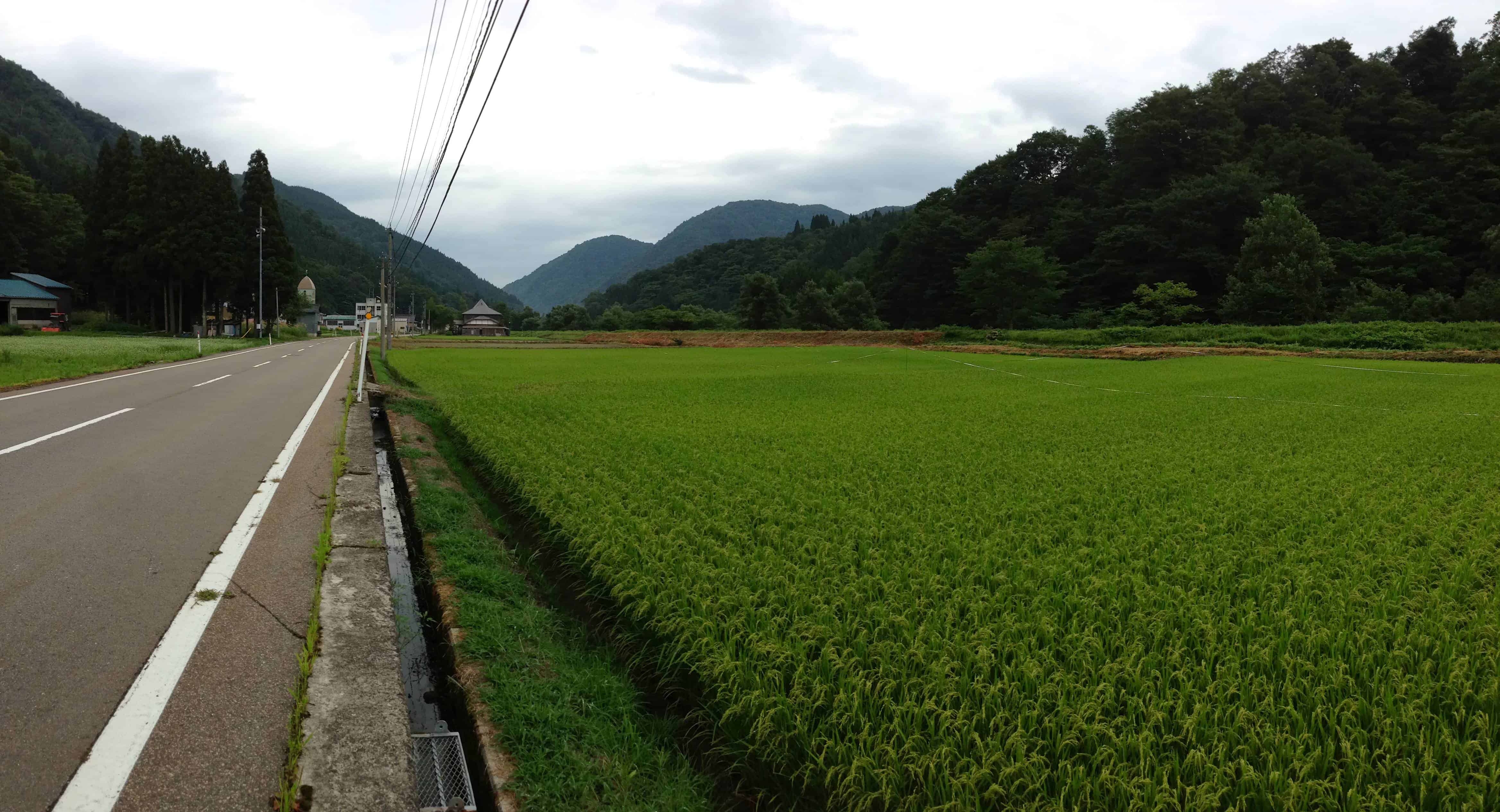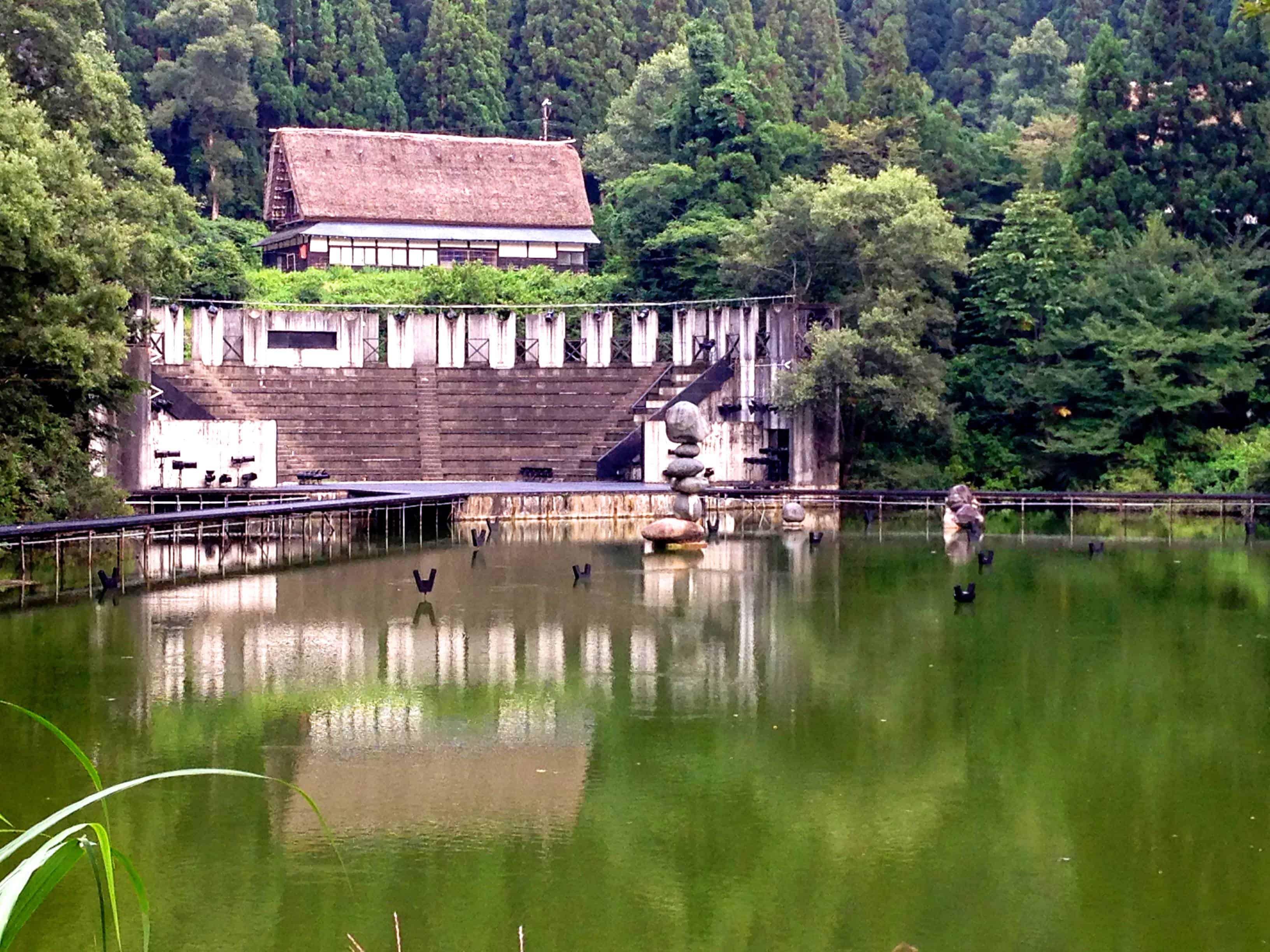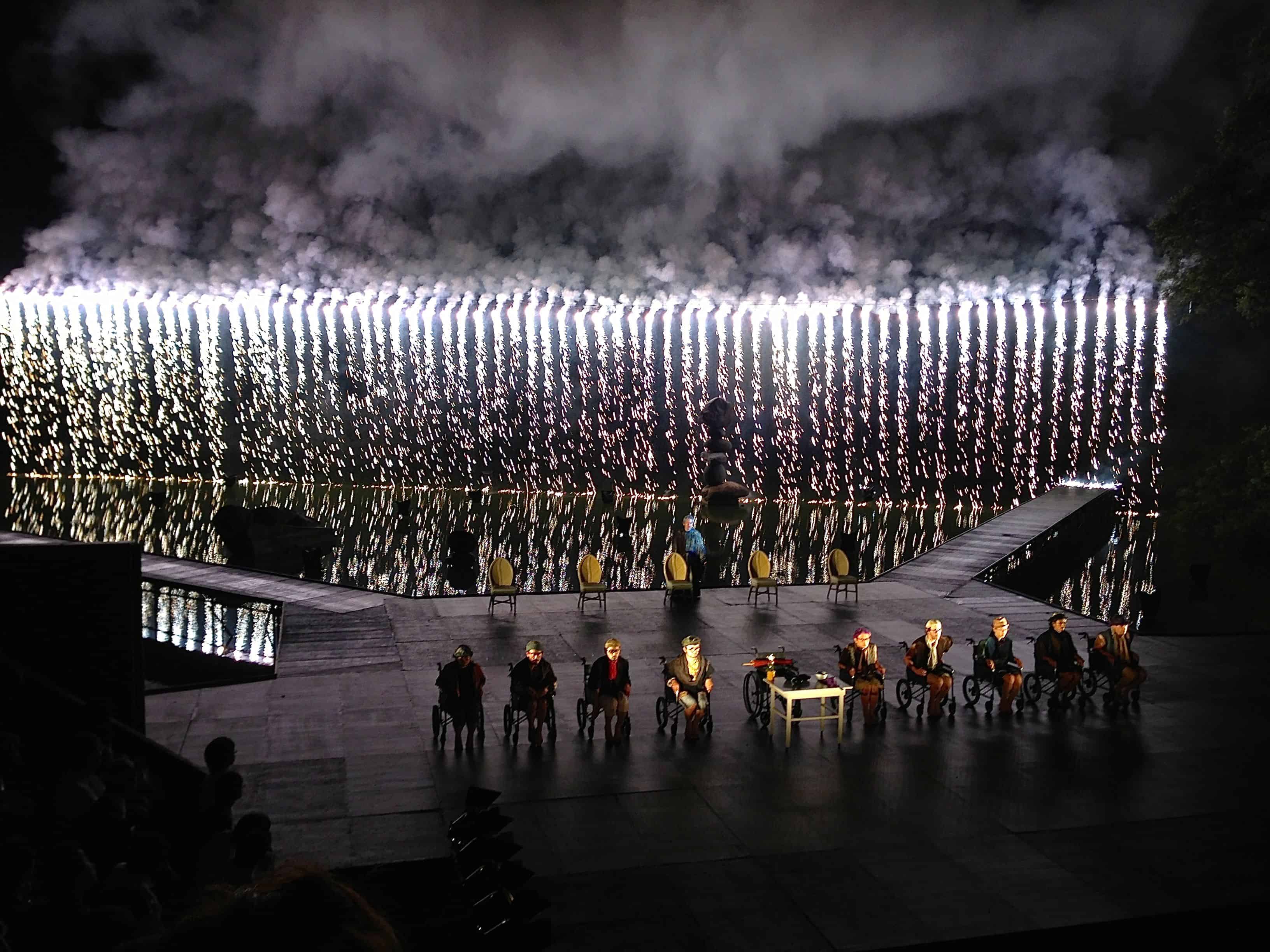Two Weeks of Theatre Pilgrimage
(Originally published in The Practice Journal Vol 3)
13 September 2013 | Mia Chee
August 2013. I've been given the honour to be sponsored by the
National Arts Council to participate in the Suzuki Company of Toga
(SCOT) Summer Training Programme. As Peter, my co-participant,
and I made our way up the winding road of the Toga village, we
were greeted by the serenity and grandeur of tall trees erected on
endless mountains. We passed by lakes and saw the occasional
shrines nestled in the walls of the mountains. The journey to the
Toga Arts Park itself was already a catharsis of some sort that cleansed
away our city dusts and everyday worries.
 Toga Village
Toga Village
We were kindly received by two SCOT members and brought to our
guest rooms to settle down. We met the other participants of the
summer camp and were welcomed with a barbeque party that very evening. Having heard already about the SCOT practice, I knew the majority of them who were barbequing, grilling, cooking, washing, serving, are great actors who have had years of training at SCOT. Yet they walked about doing their chores without putting on any air of self-assumption or arrogance. Whatever they were doing, they did with an absolute commitment and quietness.
Our training began the next day. The participants were a mix of people who were new to the training and people who have been doing the training for years. Nonetheless, we all learnt at the same pace and each was given some notes to work on. Training in the Suzuki method is never finished. There is no end to it because the body is ever changing from day to day on a short-term basis; and as one ages on a long-term basis, just as one's art and craft do. It is a practice, akin to the pianist's practice on the scales and the ballerina's practice on barre exercises.
The Suzuki Method of Actor Training trains an awareness of the invisible body. Mr Suzuki breaks down the most important physical functions for an infant to gain independent control of its body into (1) energy production, (2) breath calibration and (3) centre of gravity control. None of these phenomena - energy, oxygen and centre of gravity - can be seen with the naked eye. These functions are interdependent too. “The more energy the body produces, the more oxygen it needs, which in turn intensifies the breathing. When the breathing intensifies, it challenges the body's balance, or centre of gravity control. Training exists, then, not only to grow our capacity in each of these functions independently, but also to deepen and fortify their interrelation. The more we are able to fluidly expand the process of producing energy, taking in oxygen and maintaining balance with our centre of gravity; the more variety of movement becomes available to us, which in turn increases the stability and sustainability of life. Essentially the same principle can be applied to acting on stage. Through disciplined, integrated development of these three parameters, the body gains strength and agility, the voice acquires range and capacity and an awareness of the 'other' (the audience) grows. Such work develops the expressive potency needed to transmit the actor's point of view.”1
Hence, two weeks were spent to work on basic exercises in the training that deepen our awareness of the three crucial functions of the body mentioned above. We trained two sessions in a day and each day was precious, our bodies growing stronger by the day. In addition to training the above mentioned, the basic exercises are abstract forms that train the actor's sensibility, commitment, functionality and, most importantly, the fiction of the actor. The method is very commonly misunderstood as a harsh, militaristic training that trains certain external forms or appearances of the body. However, it is the fiction - the most important element - that completes the actor's training. This sense of fiction was most evidently seen in the training of experienced SCOT members. We had the privilege to observe a session of the SCOT members' training once. Their world on stage was big and the actors were full of mystery on stage. There was stillness in their movement and movement in their stillness. My eyes were glued from the moment they started their training till the very end. I was indeed grateful to have been able to see where the training can take actors.
 Toga Arts Park Outdoor Theatre
Toga Arts Park Outdoor Theatre
In fact, it is quite easily seen that the notion of training does not end on stage but continues through their daily lives in Toga. The company followed a roster to make breakfast for all people everyday. After we had had our fill every morning, the whole group, including us, washed and wiped dry the dishes. They adhered strictly to schedules and respected time in their daily work and activities. Breakfast started promptly at 8.30am and ended at 9.30am. On most days, after all cleaning had been done, the entire company gathered at 9.45am for a meeting to receive information on their work and schedule of the day with Mr Suzuki. It is most moving that these people live detached from their city lifestyles to commit 100% in their work and carry on their lives with such rigour up in the mountains.
During some of the nights, we were invited to watch the rehearsals of certain performances they were preparing for the Summer Season. During other nights, we were free and welcomed to go to the bar, Volcano, also manned by the SCOT members. There was one night that the bar was not opened on time because all members were in their respective rehearsals. At close to 10pm, one member who was not needed at rehearsal anymore came rushing over to man the bar. Their typical workday was broken down into morning, afternoon and evening sessions. Some members were in all four shows and they had to attend rehearsals continuously. Our summer workshop group was there two weeks prior to the opening of their Summer Season and, during those two weeks, the company worked everyday including the weekends. Saturdays and Sundays were workdays and the same goes for our workshop too.
The first rehearsal we were brought to see was Greetings from the Edge of the Earth at the famous Outdoor Theatre. I have long seen pictures of the theatre and have already rushed over to check it out on the first day I arrived. Still, the moment I sat down that night and cast my eyes on the stage, I was immediately dumbfounded. There I was, a city girl kicking up a fuss over flying bugs, while the SCOT actors rehearsed with thousands of large moths flying around them, sometimes climbing up the actors' shoulders and heads. It was only a rehearsal, yet the actors performed with their utmost commitment amidst the flying moths. The theatre lights shone on the moths and it made them look like snow swirling on the stage. The image was most beautiful and even though there weren't any moths during the actual performance later on, it stayed in my mind as one of the most amazing images I have seen at Toga.
 Edge of the Earth
Edge of the Earth
There is something to be said about the environment the SCOT
company planted itself in. The rehearsal rooms, lodgings and
theatres are not all in the same building nor are they built in a
cluster. To travel from one facility to another, one needs to walk
for ranging from 5 minutes to a good 20 minutes. Every time we
came out of our rehearsal hall, we were immediately confronted
by the trees, the mountains, the bugs, and the Kamimomose river
that runs alongside the Arts Park. In his book Culture is the Body,
Mr Suzuki talked about how modern life has been ruled by
non-animal energy and how theatre is about animal energy -
hence the method that trains the animal energy in actors. Just
like the training, we were surrounded by loads of animal energy
from the environment, at the same time very far removed from
the tons of non-animal energy we consume in the city. Living and
creating in such a place, I believe, produces artists and artworks that are - what we call in Chinese “大气” - big and open.
As our two-week workshop came to an end, the SCOT Summer Season began. People streamed in to the Toga Arts Park for the festival. Parents brought kids along to watch Greetings because there were fireworks in the performance. The fireworks were amazing and, combined with the performance, the mastery, the wisdom of the director and the outdoor theatre itself, was extremely moving that it brought tears to my eyes quite a few times. I had always found it unbelievable that SCOT performs Greetings every year but after watching it live, I understood why. And I believe it would be an absolute treat if I get to watch it every year too.
On our last day of training, one of our teachers, Kameron, talked about keeping in mind the idea of practice in us. He encouraged us to keep the moral of training and to keep it a ritual, such as how we were required to respect the rehearsal space by not chitchatting in it. Indeed, it is with years and years of practice and discipline that SCOT managed to refine and distil itself into this company that brings so much inspiration to people all around the world. As we returned to our homes, it made us ponder what we can do to escalate the art making in our hometown, country and our world. It has truly been a great gift to be shown to the work of SCOT and their space at Toga. As many of my workshop co-participants would, I believe, I too would be delighted and grateful to re-experience it again in the future. My heart is full of gratitude for the many moments of enlightenment during these two weeks.
Works Cited:
1 A Fundamental Technique and Theory of Acting -- Tadashi Suzuki
Previous |
Next


